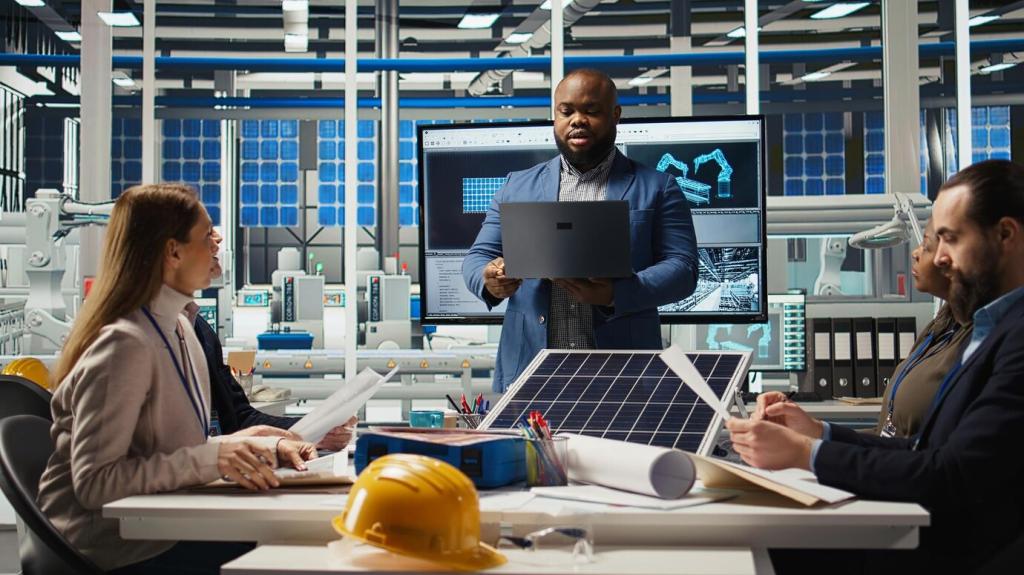Practical Energy Saving Tips for Small Businesses
Saving energy is not only environmentally responsible but also a smart financial strategy for small businesses. By making mindful improvements in daily operations, small companies can significantly reduce their overhead costs and contribute positively to the planet. This guide focuses on easy-to-implement and practical energy-saving tips, tailored specifically for the unique needs and realities of small businesses.

Switching to Efficient Bulbs
One of the simplest yet most effective ways to save energy is by upgrading to energy-efficient bulbs such as LEDs or CFLs. Traditional incandescent bulbs consume more electricity and have a shorter operational life. LEDs, in particular, use a fraction of the energy, last much longer, and provide equal or better brightness. The initial investment pays for itself many times over, given the extended lifespan and substantial reductions in energy costs. This change is especially impactful in spaces where lights are used for many hours each day.

Implementing Smart Lighting Controls
Installing smart lighting controls, such as motion sensors, timers, and dimmers, allows businesses to automatically manage lighting usage according to occupancy and daylight. Motion sensors are particularly useful in areas such as restrooms, storage rooms, or meeting spaces that are not continuously in use. Automated systems turn off lights when they are not needed, preventing waste and reducing utility bills. Dimmers also enable employees to adjust lighting levels to suit task requirements, further minimizing unnecessary electricity consumption.

Maximizing Natural Light
Taking advantage of daylight can dramatically decrease reliance on artificial lighting. Businesses should assess office layouts and workstation placements to allow as much sunlight as possible to enter and illuminate the workspace. Simple adjustments, like keeping windows unobstructed, using lighter paint colors on walls, and employing reflective surfaces, can enhance natural brightness indoors. Not only does maximizing daylight reduce energy use, but it can also improve employee mood and productivity, delivering indirect benefits beyond energy savings.
Smart Equipment Usage
01
Many offices leave computers, printers, and other electronics running or in standby mode after hours. These devices continue to draw power, leading to unnecessary energy costs known as “phantom load.” Encouraging staff to fully power down equipment when not in use, especially overnight or during weekends, is an effective strategy. Policies could include clear shutdown routines or reminders at the end of each workday. Additionally, using power strips can make it easier to disconnect multiple devices at once, further simplifying efforts to save energy throughout the business.
02
Older office equipment tends to consume more electricity and often lacks energy-saving features. Investing in devices with ENERGY STAR certification or similar energy efficiency ratings pays off over time. Modern computers, copiers, refrigerators, and even coffee makers use significantly less power for the same or better performance. These upgrades may qualify for government rebates or incentives, further lowering the total cost of ownership. A focus on efficiency with each new purchase gradually transforms the office into a more sustainable, less costly operation.
03
Regular servicing and optimization of business equipment are crucial for maintaining energy efficiency. Dusty air vents, clogged fans, and outdated software can cause machinery to work harder, consuming excess energy and potentially leading to breakdowns. Setting up maintenance schedules for cleaning, updating, and inspecting vital equipment keeps everything running smoothly. Well-maintained machines not only last longer but also operate at peak efficiency, ensuring that businesses get the most from their investments and avoid unnecessary power expenditures.
Temperature Control Strategies
A programmable thermostat allows business owners to regulate the heating and cooling schedule automatically, adapting to the specific needs of the space. By setting precise timings and temperatures—such as lowering heat during off-hours or weekends—energy is not wasted heating or cooling an empty office. These devices often feature intuitive programming and remote controls through smartphone apps, making them easy to use and efficient. Over time, they help avoid overuse of climate control systems, resulting in noticeable energy bill reductions.

